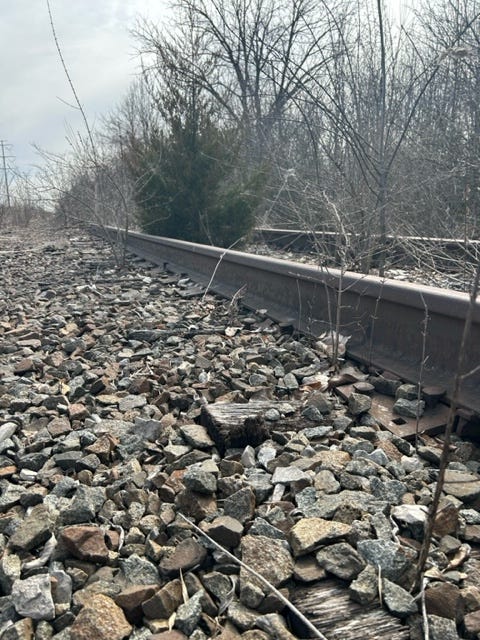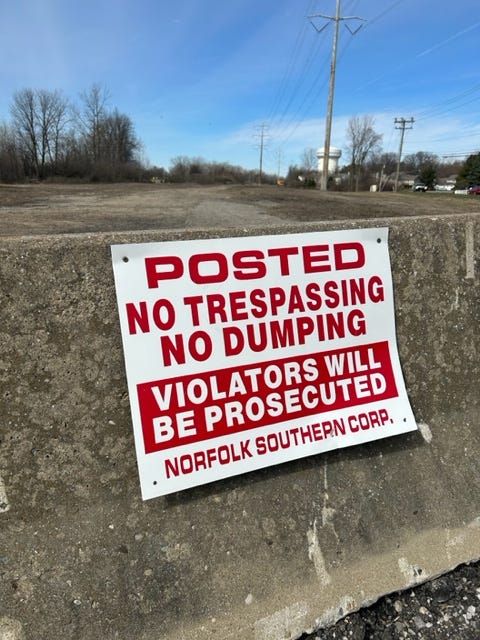Off the Rails
The Past, Present and Future of Hilliard: On Every Side of the Tracks.
Two train derailments in Ohio since Feb. 3- one resulting in the evacuation of a northeastern Ohio town- has raised the level of awareness of train safety in the Buckeye State.
While no recent derailments have occurred in central Ohio, Norwich Township has an action plan if it were to happen in Hilliard- a city with a history steeped in railroad heritage.
Hilliard is named after its founder, John Reed Hilliard, a Piqua native who never resided in Hilliard but established a railroad stop called Hilliard’s Station at what is today Main and Center streets in Old Hilliard in 1853.
The village that rose from it became what is today Hilliard with more than 35,000 residents.
Those of us living here in the latter half of the 1900s can recall the frequency of trains passing through our town.
It was not uncommon for trains to stop, blocking the crossing at Cemetery Road and Main Street, effectively cutting off one side of Hilliard from the other, sometimes for upwards of an hour.
It happened often enough that Hilliard and the Franklin County Engineer’s Office got together to build the underpass just west of Cemetery Road and Norwich Street in the late 1970s to prevent the blockage of Cemetery Road in the growing city.
Prior to this, the Norwich Township Fire Department kept an engine at a commercial building on Hilliard-Rome Road south of the city so as to have equipment available in the event of the tracks being blocked.
Responding to Trouble
While the fire department no longer needs to consider trains slowing its equipment, it does plan for the unlikely event of a train derailment- an incident that some might believe is no longer as remote after the derailment of a Norfolk-southern freight train Feb. 3, causing the evacuation of residents while hazardous chemicals were purposefully burned off to prevent a possible explosion, and a March 4 derailment of another Norfolk Southern train in Springfield that was not transporting anything hazardous.
If a train were to derail in Hilliard, Norwich Township’s response would depend on, naturally, what the train is carrying, according to Norwich Battalion Chief Chris Grile.
“(Norwich Township) does not have a specific protocol or response plan for a train derailment, it would depend more on what is involved in the derailment,” resulting in a general rescue incident and the dispatch of an engine, ladder, medic and a battalion chief to the scene, once more information was known, additional apparatus would be dispatched. The response for a train derailment would be dictated by the contents of the train and specifically the contents of the railcars that have derailed. If they were carrying Haz-Mat material a separate Haz-Mat response would be dispatched.”
This would include mutual aid partners, including Columbus, Washington Twp., Upper Arlington, Worthington, and Franklin Township.
“Each department has specialized equipment and personnel that combined, give us the ability to manage Haz-Mat incidents. The actions taken on those types of emergencies differ based on the chemicals or products involved in the incident, but could possibly include fire extinguishment, containment, and evacuation,” Grile said.
Next, first responders would advise the Northwest Regional Emergency Communications Center in Dublin to identify the owner of the train and the content of the rail cars, according to Grile.
Neither the fire department nor Hilliard knows what is loaded onto the trains traveling through Hilliard, Grile said.
“The fire department does not have direct contact with the railroad companies but NRECC is able to make these connections for us. This relay of information can happen pretty quickly once initiated.”
Once directed to do so by the incident commander, NRECC would also make contact with the Ohio EPA, ODOT, and any other applicable governing body, Grile said.
Franklin County and the State of Ohio EMA would also be a part of any major derailment, which could then trigger notification to national groups such as the Federal EMA and the national Transportation Safety Board.
“Our main focus on any emergency is saving lives, and a railroad incident is no different. Initially we would focus on the safety of the train crew and any homes or businesses near the site. At that point we step back and determine what materials are involved and develop management plans from there. This process is slower and involves the previously mentioned agencies, focusing on the safety of our first responders,” Grile said.
Train derailments have occurred in Hilliard.
Twenty-seven of 90 rail cars derailed on Pennsylvania Railroad freight train on the afternoon of April 15, 1955 near the Russell Grain Co, on the site of what is today Hilliard’s Station Park.
The train was composed on mostly refrigerator cars but beef carcasses were also reported strewn in the area, according to the Columbus Evening Dispatch.
The accident damaged 400 feet of track and monetary damages were estimated as high as $500,000. Telephone poles and parked vehicles were damaged.
An overheated axel on the 36th of 90 cars was determined as the cause of the derailment of the train traveling from Chicago to New York.
On Jan 2, 1952, a derailment in Hilliard between Main Street and Cemetery Road resulted in an overnight fire and multiple explosions as propone tanks and 20mm U.S. Army shells burned off, according the Columbus Evening Dispatch.






Great read! Wasn't old enough to remember life in Hilliard before the underpass. That was a real game-changer for the Development of the City. People must have been thrilled when it opened.
Anthony - I'm kind of a railfan, and often find myself pulling over at a crossing to watch a train pass. I particularly took note of the CSX trains of black tank cars that were passing through Hilliard almost daily. You may know that the placard on the car tells what's is carrying, and these trains were carrying crude oil, probably from the Bakken shale oil fields in the Dakotas. I'm pretty sure that a CSX train that derailed and turned into a fireball near Charleston WV had passed through Hilliard hours earlier - right through the middle of my neighborhood in fact. From there it would have gone on through the center of downtown Columbus.
Trucks carrying hazardous materials have to go around I-270, but the railroads can route pretty much whatever they want through densely populated areas. But it's not easy for the railroads to route around city centers because often the cities grew up around the railroads, like Columbus and Hilliard.
https://wchstv.com/news/local/kanawha-valley-experienced-own-trail-derailment-nightmare-eight-years-ago